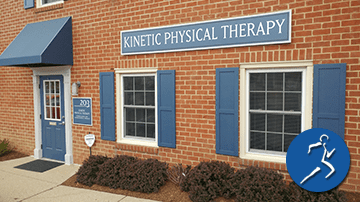
Strength training isn’t just for bodybuilders or gym fanatics. It’s for everyone—kids, adults, and seniors. Whether you’re aiming to boost energy, improve balance, or build muscle, strength training offers lasting benefits. You don’t need heavy weights or hours in the gym to see results. With a smart approach, you can strengthen your body and protect your health at any age.
Why Strength Training Matters
Building strength supports more than muscle mass. It also boosts metabolism, improves posture, and supports healthy joints. For youth, it builds coordination and bone density. For adults, it helps manage weight, stress, and chronic conditions. Seniors benefit by maintaining balance, reducing fall risk, and preserving independence.
Strength training benefits both short-term and long-term health. In the short term, it increases energy and enhances mood. Over time, it helps prevent muscle loss, improves cardiovascular health, and delays age-related decline. Strength training is a simple, effective way to invest in your future health.
Youth Strength Training
Young people don’t need barbells or complicated routines. Bodyweight exercises like push-ups, squats, and planks are enough. These movements improve strength, coordination, and confidence. Strength training in youth helps build strong bones and supports proper growth.
However, supervision and proper form are critical. Without guidance, poor technique can lead to injuries. A structured program that uses light resistance and focuses on form sets a strong foundation. Kids should start with two to three non-consecutive training days each week.
Strength Training in Middle Age
Adults in their 30s, 40s, and 50s often face new physical demands. Careers, parenting, and daily stressors can wear on the body. Strength training helps manage weight, increase energy, and support mental clarity. It also combats the natural muscle loss that begins in your 30s.
You don’t need to lift heavy weights to make progress. Resistance bands, light dumbbells, and even household items can be effective. The key is consistency and using proper form. Aim for two to three sessions per week, and vary exercises to challenge different muscle groups.
Strength Training for Seniors
It’s never too late to start strength training. In fact, it becomes even more important with age. Seniors lose muscle mass more rapidly, leading to weakness, instability, and falls. Gentle resistance training can reverse much of this decline.
Focus on exercises that promote balance, flexibility, and joint strength. Seated leg lifts, wall push-ups, and resistance bands are excellent choices. Starting slowly and progressing safely is essential. Strength training can extend independence and improve daily living when paired with stretching and mobility work.
You Don’t Need Heavy Weights
One of the most common misconceptions is that strength training requires heavy lifting. It doesn’t. Light weights, resistance bands, and even your own body weight can be just as effective. The goal is muscle engagement, not max effort.
Time under tension matters more than the weight itself. Slow, controlled movements help build strength safely. Lighter resistance often results in better form and reduced injury risk. Focusing on form, range of motion, and breathing delivers better results than trying to lift the heaviest load.
Stretching and Warming Up
Before any workout, warming up is essential. Cold muscles are more prone to strains and tears. A proper warm-up increases blood flow, raises body temperature, and prepares joints for movement.
Start with five to ten minutes of light cardio—walking, cycling, or jumping jacks. Then, add dynamic stretches like leg swings, arm circles, and hip openers. These movements activate muscles and prepare your body for strength exercises.
After training, cool down with static stretches. Hold each stretch for 20 to 30 seconds. This promotes flexibility and helps reduce soreness. Stretching also supports circulation, which aids in recovery and reduces inflammation.
Recognizing and Managing Inflammation
A little soreness after strength training is normal. However, lingering pain, redness, or swelling may be signs of inflammation. Inflammation is your body’s response to stress or injury. It’s meant to protect you, but it can slow progress when it lingers.
- Rest the affected area
- Ice for 15–20 minutes
- Compress with a sleeve or wrap
- Elevate the limb if it is swollen
If discomfort lasts more than a few days, consult a physical therapist. They can help address underlying issues and adjust your routine.
Common Minor Injuries
Even with good habits, minor injuries can still happen. Most are preventable with good form and adequate rest. Here are the most frequent issues:
- Muscle Strains – Often caused by skipping warm-ups or lifting too fast
- Tendonitis – Repetitive motion or poor posture can irritate tendons
- Lower Back Pain – Often due to poor form during squats or deadlifts
- Shoulder Irritation – Usually the result of overuse or poor alignment
Early signs include tightness, discomfort, or swelling. Resting and adjusting your form often helps. If symptoms persist, You might need physical therapy to prevent long-term issues.
When to See a Physical Therapist
Physical therapists play a key role in safe strength training. They help correct imbalances, teach proper form, and support injury recovery. Physical Therapy is especially helpful when:
- Pain lasts more than a few days
- Movement feels restricted
- Previous injuries start flaring up
- You notice a reduction in strength or balance
A physical therapist can customize a program based on your goals and limitations. They use hands-on techniques and specific exercises to improve strength and reduce risk. Seeing a therapist early prevents small issues from becoming chronic problems.
Long-Term Benefits of Strength Training
The benefits of strength training go beyond the gym. Over time, regular resistance training leads to stronger bones, better heart health, and improved mental well-being. It also helps manage chronic conditions like arthritis, diabetes, and high blood pressure.
In youth, it builds lifelong habits and body awareness. For adults, it maintains energy and protects against stress-related conditions. Seniors enjoy improved balance, fewer falls, and better quality of life. These benefits compound over time, making strength training a smart, long-term investment in health.
Have More Questions on Strength Training?
Strength training is for everyone—regardless of age, background, or experience. It boosts energy, builds confidence, and strengthens the body from head to toe. You don’t need heavy weights or complicated equipment. With good form, consistency, and proper warm-ups, anyone can succeed.
Minor injuries can happen, but most are preventable. Pay attention to your body, and don’t ignore inflammation or pain. Physical therapy can provide guidance when needed and help you stay on track.
Whether you’re just starting or restarting your fitness journey, strength training is one of the best things you can do for your health. Start where you are, use what you have, and move with intention. Your future self will thank you.


